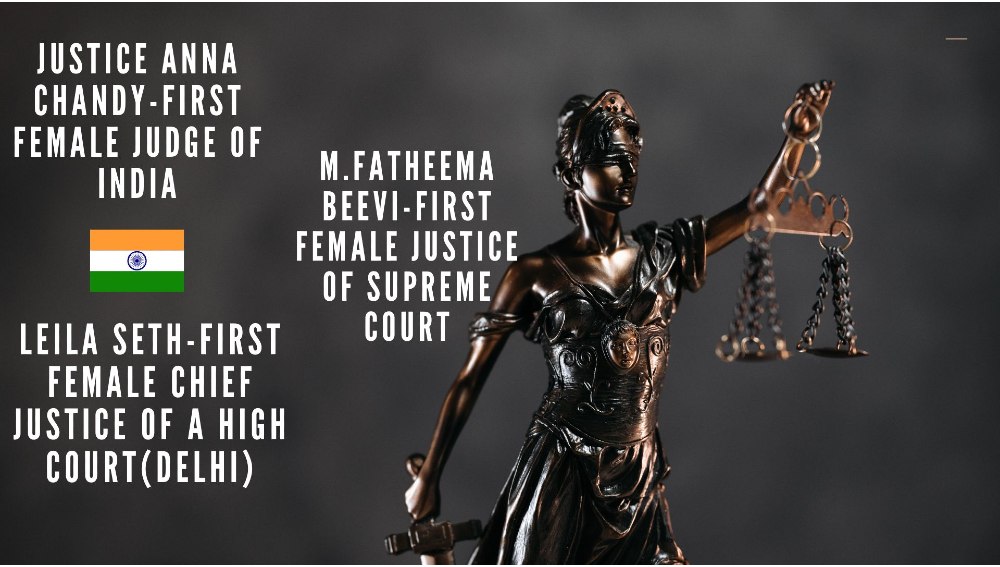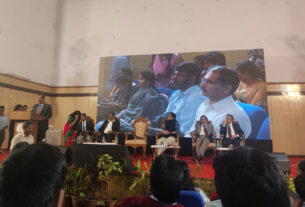The number of women in the Indian Judicial system continues to remain low in most states in the country. Delhi High Court, has the highest representation with women making up 22.47 percent of the total practicing lawyers.
A place full of men. They are all dressed in black. Dealing with their clients, checking their papers. In a courtroom, it is not a common sight to spot a group of women dresses same like men.
Women make up 24 per cent of the total registered lawyers in Karnataka. According to the Karnataka State Bar Council, there are 1,17,920 registered lawyers in the state, out of which, 29,478 are women.
Experts say that the issue is not in equal enrollment of men and women in law courses, but the disparity shows in terms of practicing lawyers.
Prashanth, senior professor of Women’s Studies at Bangalore University, said, “Enrollment of men and women in Bachelor of Legislative Law (LLB) and Master of Laws (LLM), is almost equal. But when it comes to actively practicing law, the scenario is completely different. This suggests that social situations and contracts like marriage, motherhood and homely responsibilities act as an impediment in their career.”
Radhika Iyer, a lawyer at the Karnataka High Court mentioned the same reasons for fewer women in law. She said, “It is not a hidden fact that in most cases, only women are expected to take care of the house and children. Being a lawyer, one has to be available and ready to work at any time. This field is very challenging, especially for women. Without support from family and society, women can’t sustain here.”
Ashritha, a High Court lawyer, suggested that women in the Judiciary put in more efforts and are generally better prepared than their male counterparts. But, she said that they cannot withstand the societal pressure.
“Women manage and perform well in this profession before marriage. But in most cases, because of the nature of this profession, women are forced to give up. They are expected to give more time at home than men and as a result, choose to quit the profession.”
Ashritha said that sometimes lawyers have to work day and night on a single case to do justice to it, but it comes at the cost of their personal lives.
“When I studied law, most of the toppers in my batch were women but not all of them are lawyers anymore,” Ashritha regretted.
According to the office of the registrar of Karnataka High Court, out of the 45 judges in the state High Court, only seven are women.
However, the problem is not exclusive to Karnataka. As per a survey report by VIDHI, an independent legal think tank, women made up only 16.55 per cent of lawyers, on an average in the eight states where the survey was conducted. The highest percentage of women lawyers were in Kerala, at 28.57 percent in 2020 while Uttar Pradesh had the least at 8.2 per cent of the total lawyers.
Astha, a law professional in Punjab, suggested that women choose to practice law in corporate houses because it allows them to have a work-life balance.
“The diversity of cases in court rooms requires you to challenge yourself every day. This especially becomes true when it comes to criminal cases. Most of my friends are working for corporates in their legal departments. Families also want their girls to be safe and therefore advise them to work for such companies instead of hard-core criminal law practice,” she said.
The imbalance in the representation of women in the judiciary is not limited to lawyers. When it comes to the higher posts in the Judiciary, only 11.7 percent of the total acting judges in the country are women.
According to Supreme Court Observer, currently, 76 out of the 650 High Court judges are women, which amounts to 11.7 percent of all the current judges of the 25 High Courts in India.
As far the apex court of India is concerned, of the total 33 judges in the Supreme Court, only three are women. Moreover, only 11 female judges have been appointed in the highest court of the country since 1989.
Shirin Khajuria, an advocate at the Supreme Court of India, agreed to the fact that the under-representation of women is likely to affect how the Judiciary deals with women’s rights.

“Women’s responsibilities to their homes is often a reason for women not to be able to last in this demanding profession but I choose my priorities depending upon the needs of the day. One day it is more important to spend extra few hours on a case while another day, it is more important for me to attend my child’s parent teacher meeting,” she said.
Women lawyers suggest that the government must stringently implement maternity benefits and provide crèche facilities to practicing lawyers, so it is convenient for them to manage both personal and professional aspects of their life.
The 2017 Maternity Benefit (Amendment) Act and the Karnataka Maternity (Amendment) Act, 2019, requires every organization with more than 50 employees to have a full–time crèche facility for working parents of children below the age of six years.
Shirin, however, was hopeful that the situation would improve.
“The Supreme Court has realized the importance of equal or at least, better representation of women in the Judiciary. The Supreme Court has designated 11 women as senior advocates in one day on January 19, 2024. In the past 75 years, only 12 women lawyers had been designated as ‘Seniors’ by the Supreme Court,” she added.
The Supreme Court of India will get its first ever female Chief Justice in September, 2027 when Justice Nagarathna who is currently a judge in Supreme Court of India will take oath as the Chief Justice of India for a short tenure of 36 days.




